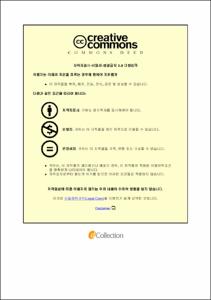Fabrication and characterization of thickness mode piezoelectric micromachined ultrasonic transducer (Tm-pMUT) based on PMN-PZT
- Title
- Fabrication and characterization of thickness mode piezoelectric micromachined ultrasonic transducer (Tm-pMUT) based on PMN-PZT
- Alternative Title
- PMN-PZT 압전 단결정 및 미세가공기술을 이용한 두께진동모드 초음파 트랜스듀서 어레이 제작 및 성능평가
- Author(s)
- Kang, Woo Jin
- DGIST Authors
- Kang, Woo Jin ; Choi, Hong Soo ; Hwang, Jae Youn
- Advisor
- Choi, Hong Soo
- Co-Advisor(s)
- Hwang, Jae Youn
- Issued Date
- 2016
- Awarded Date
- 2016. 2
- Type
- Thesis
- Subject
- Piezoelectric ; MEMS ; PMN-PZT ; Ultrasound ; Piezoelectric micromachined ultrasonic transducer (pMUT)
- Abstract
- In this study, the lead magnesium niobate–lead zirconate titanate (PMN-PZT) single crystal based thickness mode piezoelectric micromachined ultrasonic transducer (Tm-pMUT) array was fabricated using microelectromechanical systems (MEMS) process. The PMN-PZT single crystal was grown by solid-state single crystal growth (SSCG) method. The inductively coupled plasma (ICP) etching was used to make a PMN-PZT based Tm-pMUT array. The ICP etching characteristics of PMN-PZT single crystal were investigated in a BCl3/Cl2/Ar gas mixture environment. The ICP etching parameters were RF power, chamber pressure, bias power, gas mixing ratio. The RF power was varied from 200 W to 1000 W. The bias power was controlled from 50 W to 450 W, and the gas flow rate was fixed as 20 sccm. The PMN-PZT surface was analyzed using X-ray photoelectron spectroscopy (XPS) to investigate the etching mechanism. The result showed that the BCl3/Cl2/Ar plasma increased etch selectivity ratio without decreasing etch rate of PMN-PZT single crystal and the physical etching was dominant. The sidewall angles was increased along the increase of the bias power. The optimized ICP etching conditions were BCl3/Cl2/Ar= 5/2/3 (10/4/6 sccm), 800 W RF power, 350 W bias power, 2 mTorr chamber pressure. The optimized ICP etching conditions gave a 107.6 nm/min etch rate and 4.22 etch selectivity ratio. Those optimized ICP conditions were used to fabricate the PMN-PZT based Tm-pMUT array. The PMN-PZT based Tm-pMUT array has 8 annular elements. The thickness of PMN-PZT single crystal was 300 m. The average resonance frequency and anti-resonance frequency were 2.66 (± 0.04) and 3.18 (± 0.03) MHz, respectively. The measured effective electromechanical coupling coefficient (keff2) was 30.05 %. These resonance frequency has high potential for ultrasound imaging applications. ⓒ 2016 DGIST
- Table Of Contents
-
1. Introduction 8 --
1.1 Background knowledge 10 --
1.1.1 Dielectric material 10 --
1.1.2 Piezoelectric materials 12 --
1.2 Comparison between the material properHnd PZT ceramics 19 --
1.3 Necessity of PMN-PZT ICP etching 20 --
1.4 Annular array transducer 22 --
1.5 The equivalent circuit of a piezoelectric vibrator 23 --
1.6 Related research work 25 --
1.6.1 Bulk piezoelectric transducer 25 --
1.6.2 Membrane type piezoelectric micromachined ultrasonic transducer (pMUT) 26 --
2. Design and Fabrications of PMN-PZT based Tm-pMUT array 27 --
2.1 Fabrication of the PMN-PZT single crystal 27 --
2.1.1 Grown PMN-PZT single crystal by using SSCG method 27 --
2.1.2 Hysteresis loop of PMN-PZT single crystal 29 --
2.2 Design of the PMN-PZT based Tm-pMUT array 31 --
2.3 Optimization of inductively coupled plasma (ICP) etching conditions for PMN-PZT based Tm-pMUT array 33 --
2.4 Fabrication Process of the PMN-PZT based Tm-pMUT array 36 --
3. Experiment 41 --
3.1 Impedance analysis of the PMN-PZT based Tm-pMUT array 41 --
4. Results and Discussions 43 --
4.1 PMN-PZT ICP etching results 43 --
4.1.1 The etch rate and etch selectivity ratio results of PMN-PZT/Ni 43 --
4.1.2 Effect of bias power on the sidewall angle of PMN-PZT single crystal 53 --
4.1.3 The X-ray photoelectron spectroscopy (XPS) analysis results of PMN-PZT single crystal 54 --
4.1.4 Discussion of PMN-PZT ICP etching 61 --
4.2 Electrical characterization of the PMN-PZT based Tm-pMUT array 62 --
4.2.1 Impedance analyzing of the kerfed type PMN-PZT based Tm-pMUT array 62 --
4.2.2 Impedance analyzing of the kerfless type PMN-PZT based Tm-pMUT array 65 --
4.2.3 Discussion on electrical characteristics of PMN-PZT based Tm-pMUT array 68 --
5. Conclusions 69 --
REFERENCES 71
- URI
-
http://dgist.dcollection.net/jsp/common/DcLoOrgPer.jsp?sItemId=000002229789
http://hdl.handle.net/20.500.11750/1422
- Degree
- Master
- Department
- Robotics Engineering
- Publisher
- DGIST
- Related Researcher
-
-
Choi, Hongsoo
- Research Interests Micro/Nano robot; Neural prostheses; MEMS; BMI; MEMS/NEMS; BioMEMS; MEMS 초음파 트랜스듀스; 인공와우
-
- Files in This Item:
-
 기타 데이터 / 3.85 MB / Adobe PDF
download
기타 데이터 / 3.85 MB / Adobe PDF
download
- Appears in Collections:
- Department of Robotics and Mechatronics Engineering Theses Master



